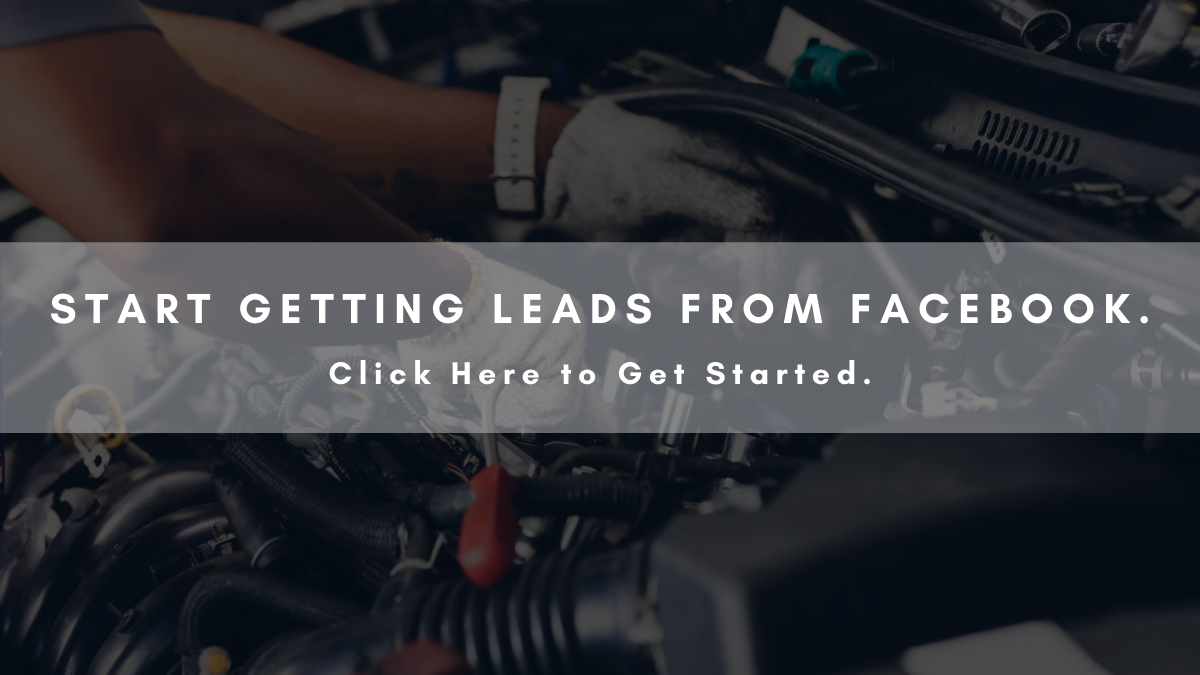The Basics of Facebook Ads for Mechanic Garages.
Facebook advertising for mechanic garages may seem like a ridiculously daunting giant to tackle, especially if you have little to no experience with Facebook advertising in the first place. But we’re here to tell you that it’s quite the opposite; in fact, we’ll even show you how you can get started.
1. Who Are Your Buyers?
Before you can actually embark on any advertising at all, you need to sit down and figure out to whom you want to advertise. I see many people make the mistake of assuming who their target audience is and jumping right into the Facebook advertising process without ever conducting any research. That’s the perfect way to waste money. Remember, Facebook doesn’t care about how profitable you are. They only care about how much money you spend with them, so take the time to figure out who your target audience is first!
2. What Is Your Value Proposition?
The second thing you should do is decide how you’re going to entice people to take action with you. In other words, why should people do business with you instead of, say, the massive Chrysler-Jeep dealership down the road that can afford to price their services lower than yours? This is communicated within your value proposition. What do you offer first-time customers? Do you send follow-up texts or emails asking them how their service with you went? Are you a smaller, independent garage that’s able to offer more personalized service than a massive dealership would? What makes you different? Sounds corny, but skip this step and, trust me, you’ll waste money.
3. Educate Yourself on Facebook Bid Strategies.
Once you’ve figured out your target audience & value proposition, the next thing you should do is educate yourself on Facebook bid strategies & budget optimization. Sounds big & fancy, but it’s really not: It’s Facebook’s way of trying to get you to spend more money on their shiny new objects. Of course, we can always do this for you, but if you’re so inclined to self-educate, here are the basics:
First, what is a bid? A bid, in terms of Facebook advertising, is how much you’re willing to pay to have your ad shown to your target audience. Bids can be set at varying levels for various things, but when you advertise on Facebook, you’re competing with the thousands of other advertisers who are also trying to show ads to the same audience that you’re targeting, and trust me, everyone is in a Facebook audience. Your bid, along with other metrics like Relevance Score, are what will determine your competitiveness as well as how often your ad is shown to your target audience.
Every bid strategy accomplishes the same goal. That goal depends on what you’re trying to achieve with your Facebook advertising campaigns, but each one shoots for the same result. If you’re optimizing for leads, each bid strategy will try to get you the most leads. If you’re optimizing for link clicks, each bid strategy will try to get you the most link clicks. The difference lies in how each bid strategy gets you those results.
There are three basic types of Facebook bid strategies. These are: 1) Lowest Cost, 2) Cost Control, and 3) Bid Cap.
The Lowest Cost bid strategy tells Facebook that you want to be as hands-off with the bidding process as possible. Facebook will use its machine-learning algorithm to automatically set your bids and try to get you the best results possible for the lowest possible cost, hence the name. Sounds great, right? Well, if it were really that simple, everyone would be rich. Unfortunately, it’s not.
Cost Control bidding strategies tell Facebook that you’re only willing to pay a maximum average of a certain dollar amount per lead or click that you generate. Facebook will try to get you the most results while keeping the maximum average cost-per-lead or cost-per-click at the amount that you set. Your cost-per-lead or cost-per-click will go above and below this average that you set, but will try to round out at the end of 4 calendar weeks at or under that average. This can be great for Facebook ad accounts that already have a lot of data, but for new ones, it’s easy to set your average cost-per-lead or cost-per-click too low which may completely stop your Facebook ads from even serving in the first place.
Finally, Bid Cap bidding strategies tell Facebook that you’re only willing to pay a maximum of a certain dollar amount per lead or per click that you generate. Facebook will work within this maximum to try and get you the most results as possible while keeping bids below the maximum that you set, but again, set your bid cap too low and your ads won’t serve.
4. Write Your Ads.
Now that you’ve squared away your target audience, your value proposition, and your Facebook bid strategies, start writing your advertising. We recommend starting off by testing 4 ads per each ad set that you create: two that test their own unique combinations of visual creative & copy and two others that do the same. Make sure your grabbing people’s attention with your value proposition & keep your ad copy specific to the audience that you’re targeting. In other words, if you’re targeting males with an interest in trucks, you don’t want to be serving ads to them about the many services & discounts you offer for compact vehicles.
Those are the basics in a nutshell! If you’re interested in outsourcing your Facebook advertising for your garage, contact us to get started!



